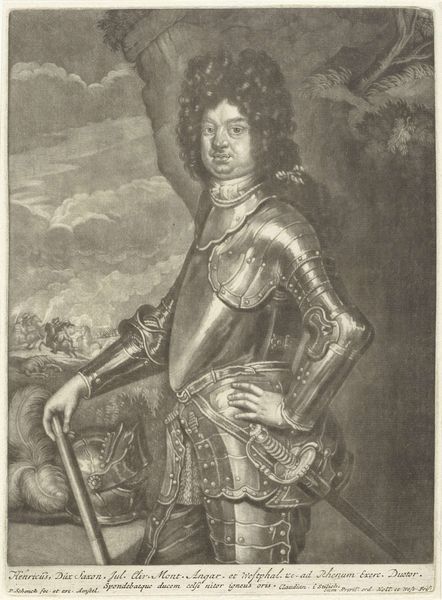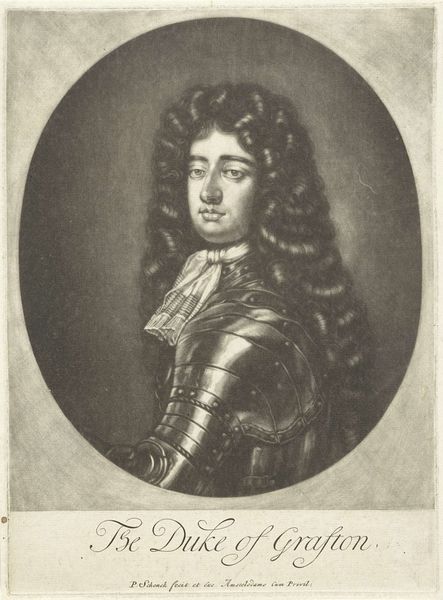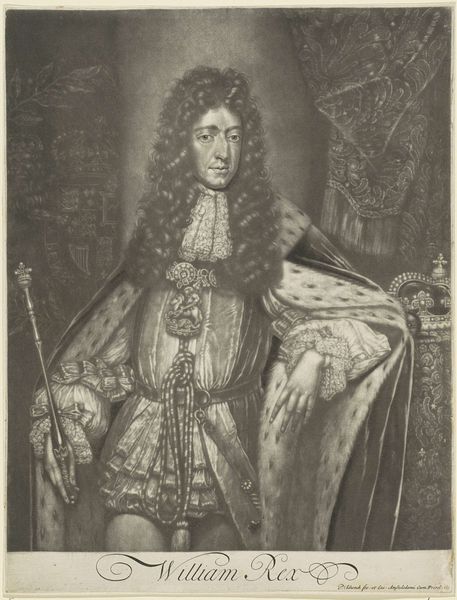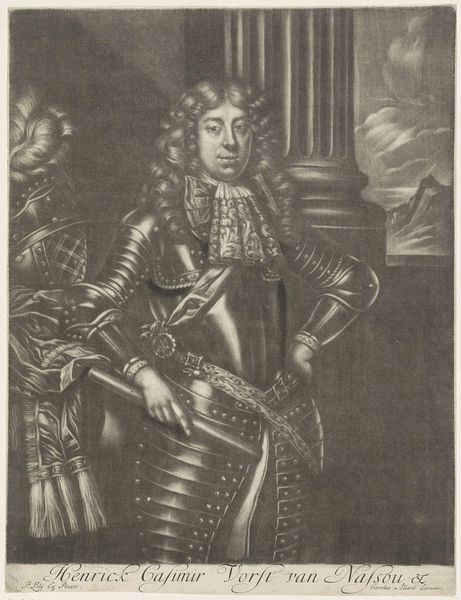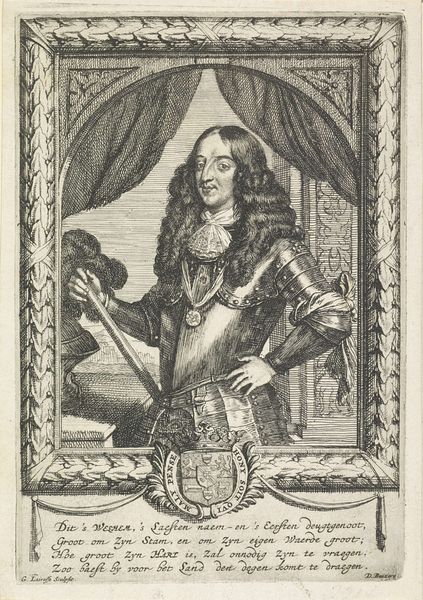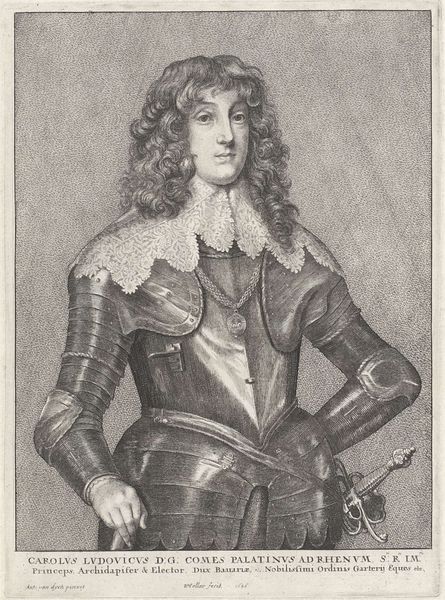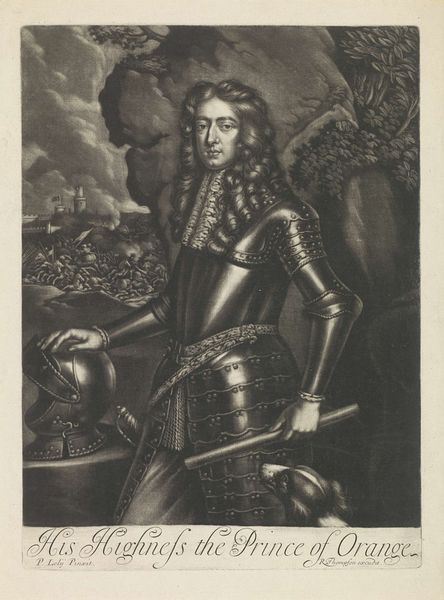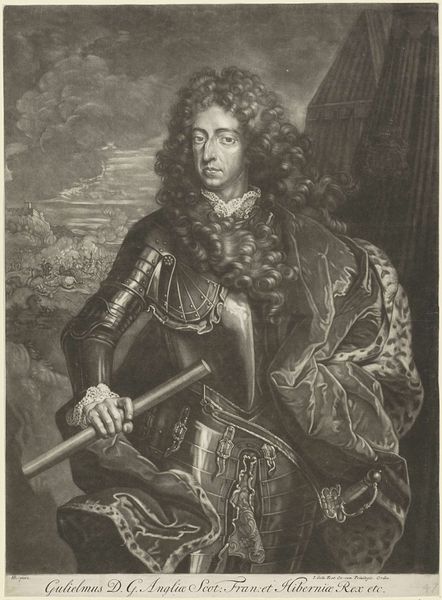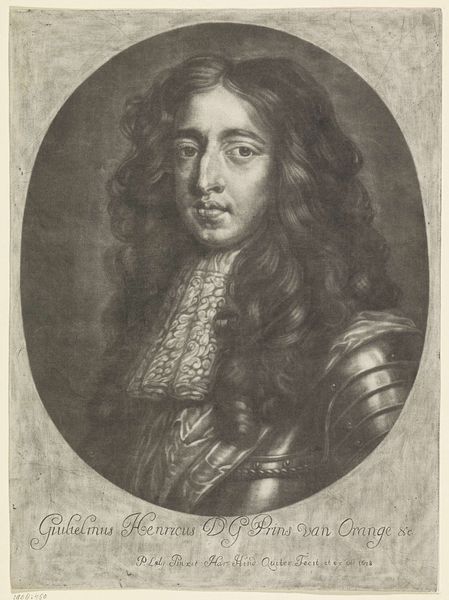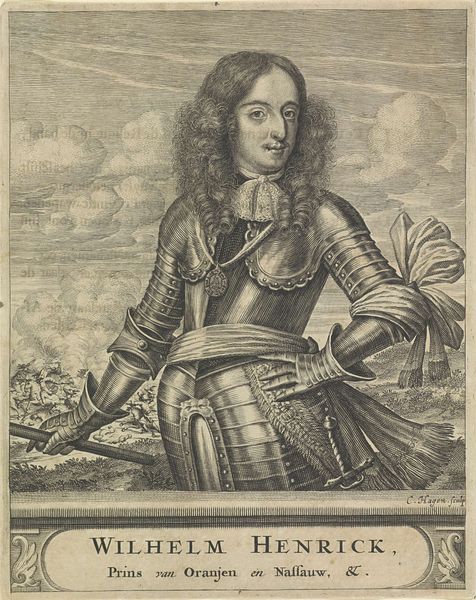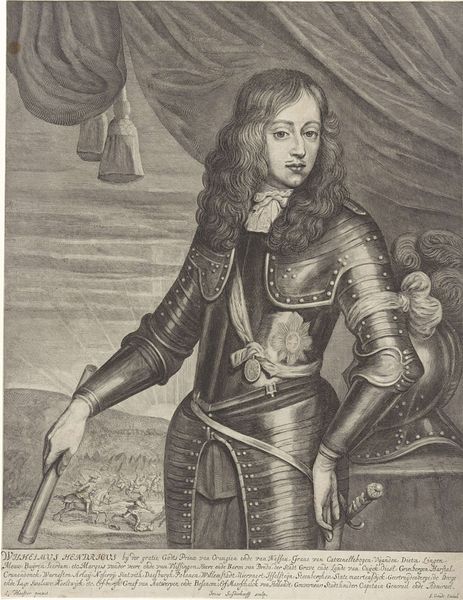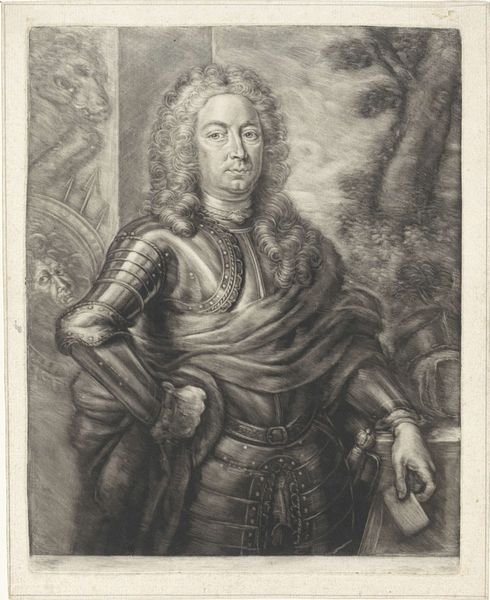
print, engraving
#
portrait
#
baroque
# print
#
caricature
#
portrait reference
#
history-painting
#
engraving
Dimensions: height 330 mm, width 252 mm
Copyright: Rijks Museum: Open Domain
Editor: So, here we have Pieter Schenk's "Portrait of Willem III, Prince of Orange," a print from sometime between 1675 and 1711. It's striking how much detail is packed into an engraving; you can almost feel the weight of the armor. What stands out to you about the materials and techniques used to create this? Curator: This portrait highlights the means of production in disseminating power. Consider the act of engraving: a laborious, repetitive process, used to reproduce images widely. Here, the 'product' isn't just the image, but the manufactured persona of Willem III. It suggests a carefully constructed public image, circulated for consumption. How does that affect our understanding of the 'original' Willem? Editor: That’s interesting. So the print isn't just *of* him, but it’s also *about* how he wanted to be seen and the process through which that image was mass-produced. It really highlights the difference between seeing him in person versus receiving this mediated version. What do you think this says about the relationship between power and representation at that time? Curator: Exactly. Power, here, becomes something that's literally *made* and then sold, distributed, consumed. The availability and visibility of this image serve a function. The very materiality of the print – the paper, the ink, the etched lines – are all instruments in the projection and reinforcement of his authority. Editor: So, it's not just a portrait; it's propaganda through process. Looking at art through its material creation and context adds a layer I hadn't fully considered. Curator: Precisely. By thinking about the material and its circulation, we get closer to understanding the social functions of art beyond mere aesthetics.
Comments
No comments
Be the first to comment and join the conversation on the ultimate creative platform.
